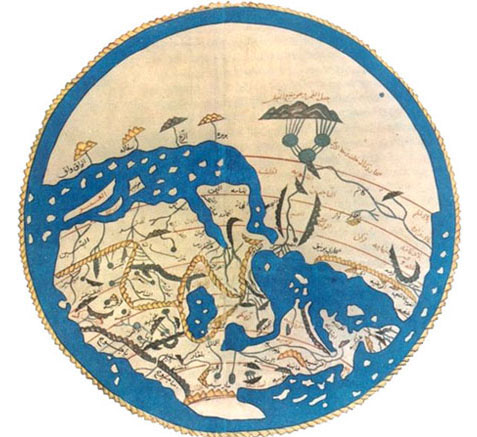Article of the Month - December 2021
“Poetic Inscriptions and Gift Exchange in the Medieval Islamicate World”
(Olga Bush: Vassar College)
Olga Bush, “Poetic Inscriptions and Gift Exchange in the Medieval Islamicate World,” Gesta 56 (2017): 178—197.
Nomination Statement:
The exquisite corpus of ivory boxes produced in Umayyad Cordoba represents the most refined carving of the era and also preserves significant epigraphic evidence for enriching our understanding of courtly and poetic networks in the Medieval Mediterranean. Olga Bush makes a key intervention in scholarly debates about this important corpus by approaching it from the perspective of poetry and the Islamicate gift economy, noting especially figures of prosopopeia and the luxury items that speak in first-person voice. Of the many strengths of the article is its contextualization of this literary strategy within diverse Islamicate courts but also in relation to pan-Mediterranean visual traditions—Byzantine and Romanesque. But most significant is Bush’s nuanced argument about inscriptions and gendered subjectivity, which is advanced in the third part of the essay with its focus on the pyxis in the Hispanic Society of America. In Bush’s dynamic reading of this pyxis, the poetic inscription gives voice to a woman—Subh—and in the process Bush restores agency to women in the courtly networks of gift exchange.
[Cecily Hilsdale]
Publisher’s Abstract:
The use of poetry in inscriptions on luxury objects is a notable feature in the arts of the Islamicate world, particularly in the case of gifts, in which the verses articulate underlying social relations. Scholars often consider such inscriptions within a frame of literal reference, as alternative sources of documentary evidence and/or as ekphrastic descriptions of the object on which they appear. Moving beyond mimesis, this study takes up the figurative dimensions of poetry, exemplified here by the trope of prosopopeia, which gives a fictive voice to inanimate objects and allows the inscribed gifts to speak for themselves and to their recipients. The essay demonstrates the significance of recited and inscribed poetry in the gift economy of the Islamicate world. It shows the widespread nature of the phenomenon by outlining the history of poetic inscriptions, with special attention to the use of the first-person voice, from Graeco-Roman antiquity to Byzantium and on to the Islamicate world. Narrowing the focus to medieval Iberia, it offers a case study of a tenth-century ivory pyxis made near Umayyad Cordoba to test the value of introducing a theory of prosopopeia, and the analysis of poetic figuration more generally, to the study of luxury gifts in the Islamicate world. Prosopopeia, I argue, makes objects into subjects through the speaking “I,” and with the performance of subjectivity comes the construction of agency. In the case of the Umayyad pyxis, a reading attentive to the prosopopeia in the inscription helps restore agency to women in the gift exchange.
Author’s Comment:
In my earlier work on the Alhambra, the medieval palatial city of the Nasrid dynasty in Granada, I had dedicated much attention to the role of the abundant poetic inscriptions in the architectural decoration, both as a guide to the design of buildings and its decoration and to the experience of architecture by the Nasrid beholder. In this article, I drew upon that interest in poetic inscriptions, but shifted my focus to luxury objects made at medieval Mediterranean Muslim courts. Consideration of the ceremonial function of poetic recitations at court receptions, the high status of court poets, and the importance of individual objects inscribed with verses, all within the commerce of gift exchange in the pan-Mediterranean context, led me to the discussion of the shared perceptions and expectations of, and responses to such gifts across dynastic, religious and geographical boundaries. The rich anthropological literature on the topic of gift culture pushed me to theorize the work of poetry in relation to the inscribed objects, concentrating on cases that employ the trope of prosopopeia, by which an object may figuratively address the beholder in the first-person voice. I was thus able to bring to the fore a position that had been implicit, but never fully developed in my previous essays, and which proved, in turn, crucial to my subsequent monograph on the Alhambra. To locate this article in the field of Medieval Studies, I might say that it joins a trend toward theoretically explicit, intercultural, interdisciplinary and inter-medial research. More specifically, the article participates in a larger effort to develop a theoretical approach from the particularities of cultural production in the Islamicate world—in this case, the ubiquitous practice of poetic inscription in Islamic art—which may have broader implications for pan-Mediterranean medieval culture.
Keywords: Islamic arts — medieval — Mediterranean — gift economy — court ceremonial — poetry — poetic epigraphy — prosopopeia
Read the article here.
Would you like to discuss this article?
Start a thread on the Mediterranean Seminar list-server
See the other Articles of the Month here.
